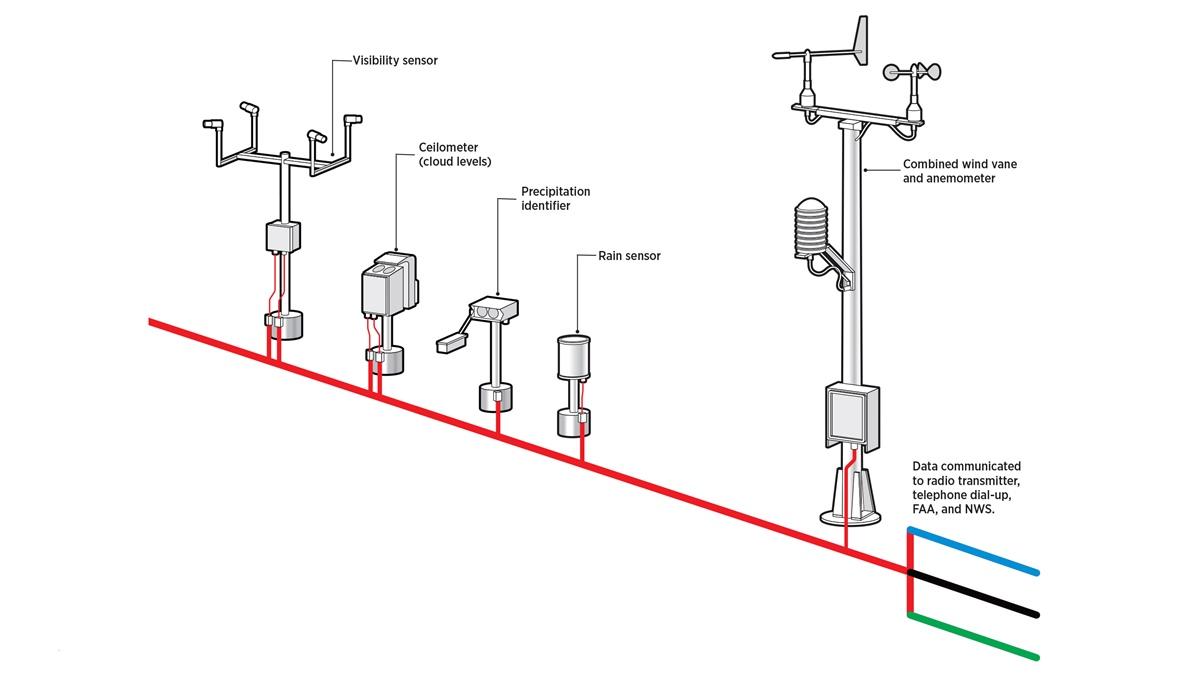How It Works: Automated Weather Reporting Stations
Network of sensors communicate conditions

Weather is the pilot’s great unknown. It’s constantly changing, and no two days are the same. Timely and accurate weather reports are critical to making good decisions that keep our flights safe. To help inform those decisions, the United States has a network of weather reporting stations, made up primarily of the automated weather observation system (AWOS) and automated surface observation system (ASOS).
Each system is a collection of sensors that report conditions to the FAA for dissemination, over a dedicated phone line, and to the control tower.
Although many pilots use the terms interchangeably, there are some differences between the two systems. AWOS is the older of the two, and it can be found only on an airport. ASOS is run as a cooperative among several government agencies, and stations can therefore be found off airports, which may help with route planning. Reporting intervals may be different as well, with AWOS reporting every minute, typically at a nontowered airport, and ASOS reporting only once an hour, to coincide with the tower’s automated report. ASOS also reports total precipitation accumulation.
Most systems in use today offer temperature, dew point, cloud cover and altitude, visibility, wind speed and direction, any current precipitation, and location of lightning strikes. Some also have the ability to report icing and runway conditions.
Both systems report the weather in the same format, so the differences are seamless to most of us. Find the frequency and the phone number in the chart supplement for the airport.



